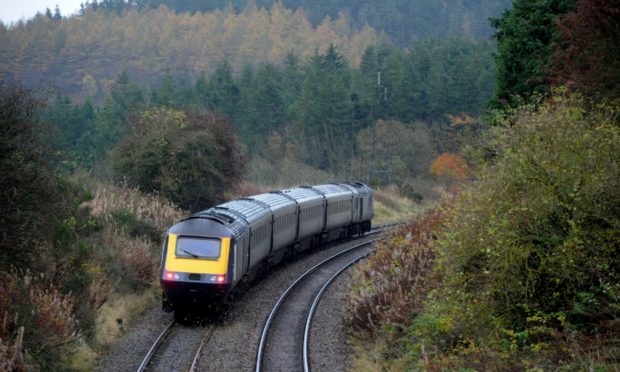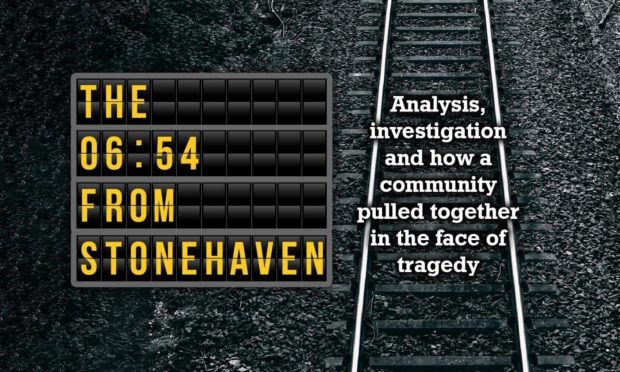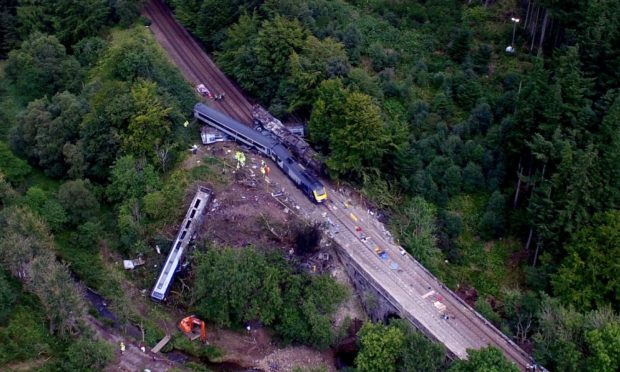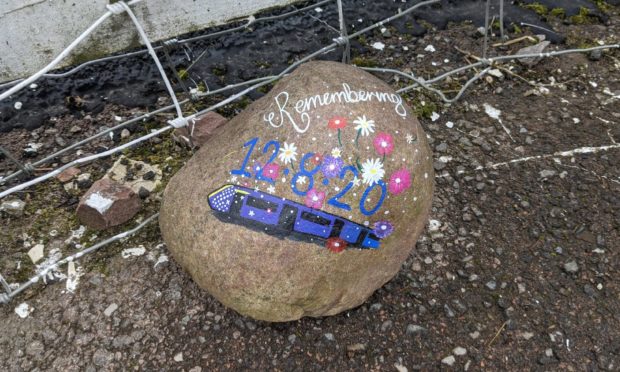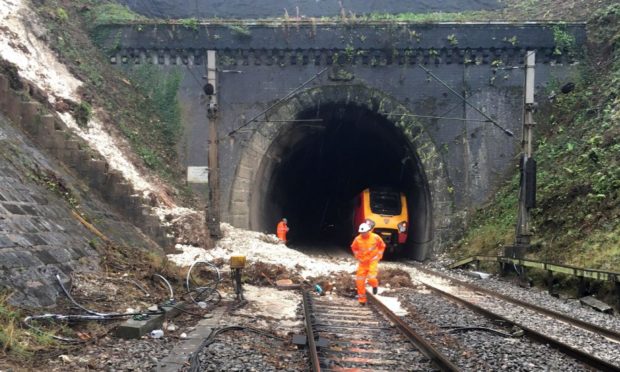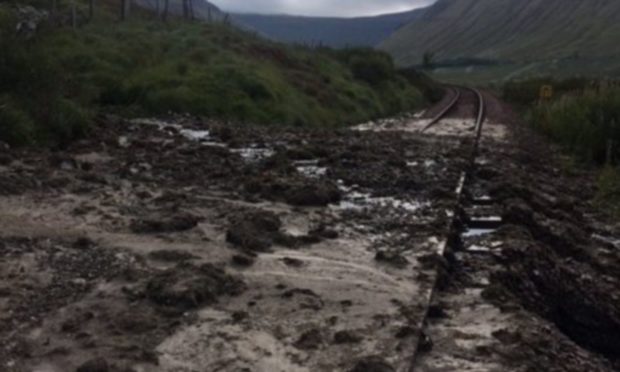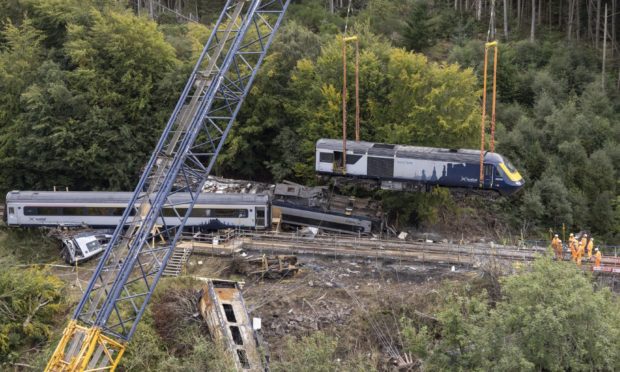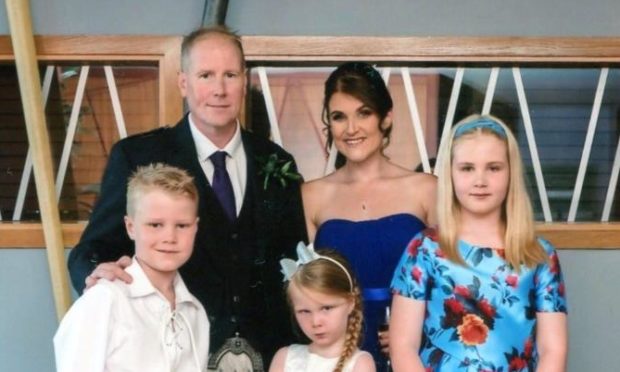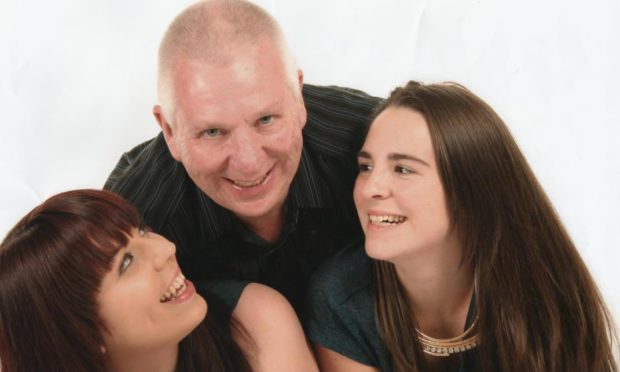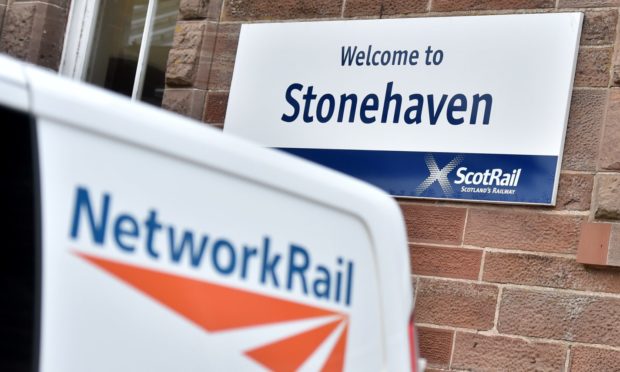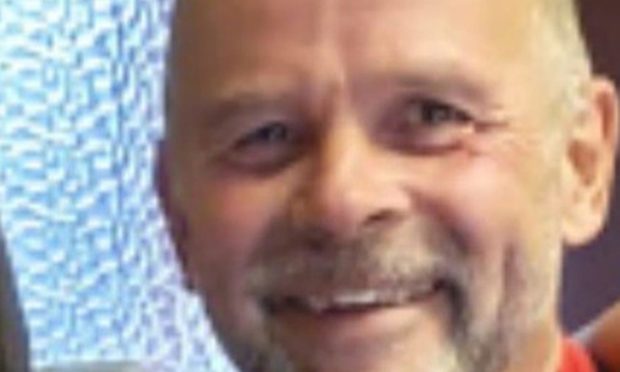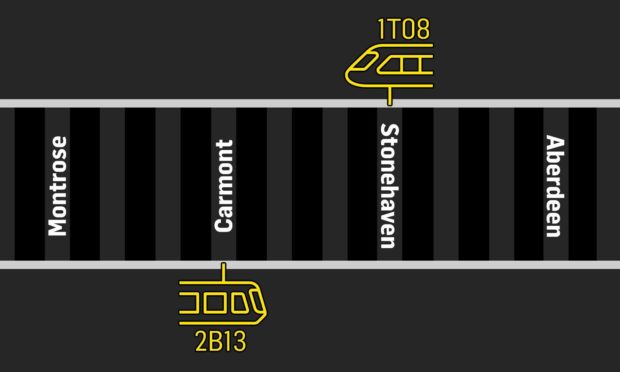Rail bosses have come under fire after train drivers were clocked at 100mph on tracks where a 40mph emergency limit had been put in place amid landslip fears.
The drivers, who were on the Aberdeenshire stretch of line where there was a fatal crash just four months before, had not been told about the need to slow down due to the conditions by higher-ups.
Last night, the family of Brett McCullough, the driver killed in August’s derailment, branded the dangerous incident in December “outrageous negligence” so soon after the tragedy which cost his life.
Conductor Donald Dinnie and passenger Christopher Stutchbury also died at the scene, while the other six people on board were injured after the train left the rails at Carmont, west of Stonehaven, having hit a landslip.
Heavy rain – around 75% of the average monthly total – had fallen across Aberdeenshire that day, leading to the incident.
The Rail Accident Investigation Branch (RAIB) has now launched an investigation into the incidents on December 4, between Portlethen and Laurencekirk.
A temporary maximum speed of 40mph had been enforced on the line over fears forecasted rain may have caused a landslip.
Despite this, the two morning services – heading from Dundee to Inverness and Inverness to Edinburgh – hit speeds of 100mph.
Signs on the affected stretch were not used to inform drivers of the change, whose only brief was a printed notice as they booked in for their day’s work.
Carmont, the site of the fatal derailment, is within the stretch covered by the emergency limit imposed last month.
The RAIB has found that neither train driver on December 4 was aware of the emergency speed restriction and the speeding was only identified after a Network Rail signaller noticed “the relatively short time” trains took to pass through the area.
No one was hurt.
The report reads: “Neither of the train drivers was aware of the emergency speed restriction at the time they drove their trains over the affected section of track.
“Lineside signage was not provided by Network Rail processes applicable to this type of speed restriction.
“After the overspeed, the method of working was changed so trains were stopped shortly before reaching the restricted area while signallers reminded drivers about the reduced maximum permitted speed.”
Last night, Salina McCullough, sister of driver Brett, said the incidents highlighted continued “systemic leadership failures”.
“The safety of drivers, crew and passengers is clearly not a priority,” she added.
“What is the point of having ’emergency speed restrictions’ in place if they aren’t going to notify the drivers? It’s absurd.
“Have they learned nothing from the crash in August or were three fatalities not sufficient for quick changes in safety procedures to be implemented?”
She added: “As far as I’m aware, before drivers board their trains, they are handed a piece of paper which details speed restrictions on their route.
“A piece of paper? Are we still living in Victorian times or in the 21st century?
“I’d like to gain an understanding of the level and duration of training their leaders have to go through before they are given the power to direct others and make decisions that could ultimately lead to dangerous situations and deaths.
“Changes in leadership must be made as a matter of urgency before there are more fatalities.
“My family and I have just suffered our first Christmas without Brett, and enter 2021 without him.
“The pain we suffer from our loss of Brett is beyond explanation and seeing this example of outrageous negligence has fuelled my quest for justice and change even further.”
A spokesman said Network Rail was working closely with the RAIB to assist the investigation.
He added: “We and ScotRail have already looked into these incidents and have changed and strengthened our collective approach to implementing and keeping to speed restrictions.”
